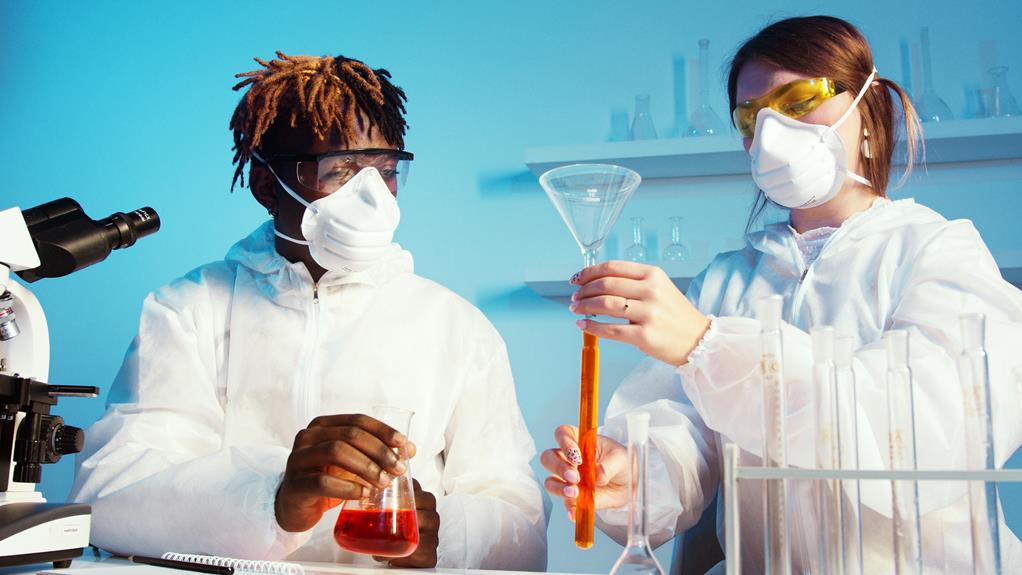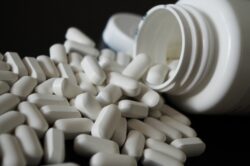Pharmaceutical Giants Face Justice in Bad Drug Lawsuits
This article critically examines the legal battles faced by pharmaceutical giants, amidst allegations of harmful drugs. We navigate the complex terrain of prescription medication lawsuits, exploring liability claims, class action challenges, and the concept of comparative fault. Examining the role of substantial modification and the statute of limitations underscores the need for proficient legal representation. This piece serves as an insightful guide into the intricate world of pharmaceutical lawsuits and the quest for justice.

Key Takeaways
- Types of prescription medication lawsuits include failures to warn consumers, design defects, and manufacturing defects.
- Pharmaceutical companies, testing laboratories, pharmacies, doctors, and hospitals can be held liable in bad drug lawsuits.
- Lawsuits against pharmaceutical companies can take a long time to resolve and may involve multiple plaintiffs in class action lawsuits.
- Comparative fault, assumption of risk, and substantial modification can affect the recovery of damages in bad drug lawsuits.
Understanding the Nature of Prescription Medication Lawsuits
While understanding the nature of prescription medication lawsuits requires a deep dive into the intricacies of pharmaceutical industry practices, liability issues, and legal procedures, it is essential to note that these legal battles are primarily aimed at seeking justice for individuals who have suffered harm due to defective or improperly marketed drugs. Understanding the burden of proof in prescription medication lawsuits entails establishing that the medication in question caused harm, and that the pharmaceutical company failed to warn the consumer about potential risks or side effects. It's here that the role of expert witnesses in bad drug litigation becomes crucial. They provide an in-depth analysis of the drug's effects, helping to substantiate the plaintiff's claims while debunking defenses that the pharmaceutical company may raise.
Identifying Potential Defendants in Bad Drug Lawsuits
In the realm of bad drug lawsuits, up to five types of defendants can be held liable, including pharmaceutical companies, testing laboratories, pharmacies, doctors, and hospitals. These potential defendants bear significant responsibility in ensuring the safety and efficacy of the medications available to patients. When these standards are not met, liability in lawsuits becomes a potential consequence. Pharmaceutical companies, for instance, may be held accountable for design or manufacturing defects. Testing laboratories could be liable for failure to identify potential hazards. Pharmacies may face legal repercussions for incorrect dispensing, while doctors can be held responsible for prescribing errors or off-label use. Lastly, hospitals could be liable if they fail to ensure the proper administration of medications. This highlights the complexity inherent in identifying liability in bad drug lawsuits.
The Role of Strict Liability Claims in Pharmaceuticals
Given that strict liability claims hold manufacturers accountable for damages caused by their products, these claims play a pivotal role in pharmaceutical lawsuits, particularly when the drugs in question have design defects or have caused harm to consumers due to failures in warning about potential risks. In the realm of pharmaceuticals, manufacturer liability is a critical element that ensures the safety and efficacy of the drugs. Through strict liability claims, manufacturers are compelled to adhere to the highest standards in drug design, production, and disclosure of potential risks. This not only safeguards consumer health but also fosters trust in the pharmaceutical industry. Thus, strict liability claims serve as a cornerstone of consumer protection, bridging the gap between manufacturers and consumers.
An Overview of Class Action Lawsuits in the Pharmaceutical Sector
Class action lawsuits in the pharmaceutical sector, often involving multiple plaintiffs, serve as a powerful tool in holding large drug manufacturers accountable for widespread harm caused by their products. This collective legal action enables victims to confront potential defenses in pharmaceutical lawsuits, which may include comparative fault, assumption of risk, or substantial modification. These defenses necessitate robust evidence, underscoring the significance of expert testimony in drug lawsuits. Such testimony provides comprehensive insight into drug design, manufacturing processes, and potential side effects, thereby strengthening the plaintiff's case. Expert witnesses also play a crucial role in rebutting defenses by establishing a clear link between the drug and the harm suffered, thereby facilitating a fair resolution for the victims.
The Long Road to Justice: Timescale of Pharmaceutical Lawsuits
The journey towards justice in pharmaceutical lawsuits often unfolds over a prolonged timeframe, marked by intricate legal processes and rigorous scrutiny of evidence. This timescale of pharmaceutical settlements is frequently extended due to the complexity of medical and pharmaceutical evidence required to substantiate claims. Additionally, the immense resources of pharmaceutical companies often pose formidable challenges in resolving drug lawsuits, as these entities deploy comprehensive defensive strategies to protect their interests. Yet, despite these obstacles, the pursuit of justice remains relentless. Legal teams meticulously dissect drug trials, patient histories, and adverse effects to build compelling cases. Consequently, while the road to justice in pharmaceutical lawsuits can be long and arduous, the meticulous investigation and relentless pursuit of truth gradually tip the scale towards resolution and reparation.
The Impact of Class Action Lawsuits on Legal Procedures
While seven out of ten pharmaceutical lawsuits become class actions, these collective legal actions, in turn, influence and shape the legal procedures, both in terms of litigation strategies and judicial management. The impact of class action lawsuits on legal procedures is profound; they streamline the litigation process, allowing numerous plaintiffs to pool resources and collectively assert their rights. However, these suits present unique challenges, particularly for plaintiffs in bad drug lawsuits. They grapple with procedural complexities, resource disparities against pharmaceutical giants, and the onerous task of proving causation. These challenges underscore the need for adept legal representation. Nonetheless, the rise of class actions is a reflection of their efficacy in securing justice, reshaping the legal landscape, and holding pharmaceutical companies accountable.
How Comparative Fault and Assumption of Risk Influence Drug Lawsuits
In the realm of pharmaceutical litigation, understanding the interplay between comparative fault and the assumption of risk is crucial, as these factors can greatly influence the outcome of drug lawsuits. Comparative fault, where blame is apportioned according to each party's contribution to the harm, may reduce the plaintiff's compensation. In contrast, the assumption of risk can potentially absolve defendants from liability if a plaintiff knowingly used a drug despite its risks. Crucially, the role of foreseeability in manufacturer liability influences these elements. If a manufacturer could reasonably predict harmful side-effects, they bear greater responsibility. However, if a patient misuses a drug, foreseeability shifts, potentially limiting the manufacturer's liability. This intricate balance between comparative fault and assumption of risk must be thoroughly examined in drug lawsuits.
The Intricacies of Liability in Cases of Substantial Modification
Delving into the complexities of substantial modification, we must consider how liability may shift when users significantly alter the usage of a drug post-manufacture, leading to unforeseen consequences. Understanding manufacturer liability in these contexts become critical. The manufacturer's responsibility is generally confined to their product's intended use, as described in the official guidelines. The role of testing laboratories is pivotal in determining if substantial modifications were foreseeable during the drug's development phase. If the modification was foreseeable, the manufacturer may still be held liable. However, if the use is significantly divergent and unforeseeable, the liability could shift to the user. This highlights the intricate nature of pharmaceutical liability, underscoring the importance of comprehensive legal understanding in such contexts.
The Importance of the Statute of Limitations in Pharmaceutical Lawsuits
Navigating the complexities of pharmaceutical lawsuits involves understanding the critical role of the statute of limitations, a temporal boundary that, if crossed, can potentially absolve manufacturers of their liability. The impact of delayed justice in pharmaceutical lawsuits is profound. Often, victims suffer prolonged physical and emotional distress, while the alleged offenders continue their operations unhindered. This delay significantly challenges the process of proving causation in bad drug lawsuits. The lapse in time might blur the link between the drug's usage and resultant harm, complicating the establishment of manufacturers' liability. Therefore, understanding the statute of limitations is critical in these lawsuits. Onus lies on the victim to initiate proceedings timely to avoid invalidation of their claim, ensuring that justice is not indefinitely postponed.
Navigating the Legal Landscape: Finding the Right Attorney for Drug Lawsuits
Understanding the intricacies of prescription medication lawsuits can be overwhelming, but having the right attorney to guide you through the process can make all the difference. The importance of thorough research in selecting an attorney for drug lawsuits cannot be overstated. The attorney should have a deep understanding of medical and pharmaceutical terminology and a proven track record in handling similar cases. The common challenges faced when finding suitable legal representation for pharmaceutical lawsuits often include lack of specialized knowledge and experience in this complex field. Moreover, the chosen attorney should be able to navigate the tangled web of pharmaceutical litigation, deal with powerful pharmaceutical companies, and overcome various legal obstacles. Therefore, proper research and careful selection are key to finding the right legal representation in these cases.
Frequently Asked Questions
What Are the Common Side Effects That Lead to Prescription Medication Lawsuits?
Prescription medication lawsuits often stem from severe side effects not adequately disclosed during the Drug Approval Process. These can range from physical ailments like organ damage, to psychological issues such as depression. In instances of Medication Misuse Consequences, improper usage leading to addiction or overdose can also prompt legal action. These lawsuits underscore the necessity for transparency and rigorous testing in the pharmaceutical industry to ensure patient safety and trust.
How Is the Value of a Settlement in a Pharmaceutical Lawsuit Determined?
The value of a settlement in a pharmaceutical lawsuit is determined by several factors, including the severity and longevity of the plaintiff's injuries, the extent of financial losses, and the degree of the defendant's negligence. Consideration is also given to drug pricing controversies, which can inflate the damages awarded. The lawsuit valuation process requires meticulous examination of medical records, financial documents, and expert testimonies to establish a fair compensation amount.
In What Scenarios Can a Pharmaceutical Company Be Exempted From a Lawsuit?
Pharmaceutical companies may be exempted from lawsuits through certain lawsuit immunities and regulatory loopholes. These might include preemption, where federal law overrules state law, and the 'learned intermediary' doctrine, stating that the obligation to inform patients of risks lies with healthcare providers. Additionally, companies may argue product alteration or misuse. However, these immunities are not absolute and depend on the specific circumstances of each case.
What Are Some Examples of Successful Lawsuits Against Pharmaceutical Companies?
Several successful lawsuits against pharmaceutical companies include the 2012 GlaxoSmithKline case for improper marketing and failure to report safety data ($3 billion settlement), and the 2009 Pfizer case for off-label marketing ($2.3 billion settlement). The Drug Recalls Impact can significantly affect the outcomes, as seen in the Merck's Vioxx recall ($4.85 billion settlement). Patent Infringements Consequences also shape legal actions, such as the $1.67 billion settlement against Abbott Laboratories in 2011.
How Are the Victims Compensated in Class Action Lawsuits Against Pharmaceutical Companies?
In class action lawsuits against pharmaceutical companies, victims are typically compensated through a settlement fund. The fund's amount is determined by the court, based on factors such as severity of harm and number of claimants. Distribution is generally equal among plaintiffs, but can vary based on individual circumstances. Legal representation choices are crucial in ensuring fair compensation, while patient rights awareness helps victims understand their entitlements and navigate the complex legal process.
Conclusion
In conclusion, bad drug lawsuits present a complex interplay of legal, medical, and ethical issues. They highlight the necessity of holding pharmaceutical giants accountable for their products' repercussions. Understanding the intricacies of these lawsuits, including strict liability claims, comparative fault, and the statute of limitations, is essential for achieving justice. As these legal battles persist, the role of experienced legal representation becomes increasingly critical in navigating this intricate and high-stakes landscape.

This post has been generated by AI and was not reviewed by editors. This is Not legal advice. Please consult with an attorney.




